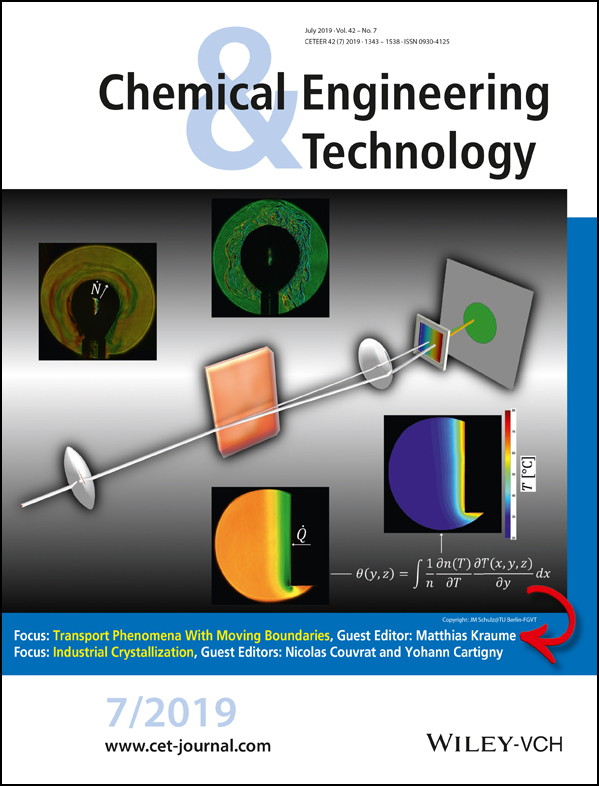Modeling and Growth Kinetics of Antisolvent Crystallization Applied to the Pharmaceutical Industry
Abstract
With the aim of simulating the product crystal size, which is one of the important physical properties for active pharmaceutical ingredients, an antisolvent crystallization model is proposed, including only six experimentally determined kinetic parameters to develop a concise model. As a first step, the methodology to assess the growth rate parameters, which are some of the six kinetic parameters, is discussed. An approach for appropriately treating the size distribution data obtained by means of the laser diffraction/scattering method is suggested. The determined growth rate parameters could be used to simulate the crystal size indicating that the simulation by crystallization modeling is a practical application for the pharmaceutical industry.




